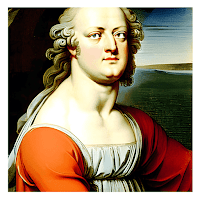Romantic Art: A Journey Through Emotions and Imagination
Nature, Individualism, and
Emotion: The World of Romantic Art
I. Introduction
Romanticism was a cultural movement that emerged in the late
18th century and continued to influence art, literature, and music through the
mid-19th century. Romantic art, in particular, was characterized by a
heightened sense of emotion, imagination, and individualism. This article
explores the world of Romantic art and the ways in which artists expressed
their emotions and imaginations through their work.
II. Romanticism and Art
Romanticism was a reaction to the Enlightenment and the Age
of Reason, which emphasized rationality, scientific progress, and the pursuit
of knowledge. The Romantic movement rejected these ideas and instead focused on
emotion, intuition, and individualism. In art, this meant a shift away from the
strict rules and principles of Neoclassicism towards a more personal and
expressive style. William Blake is one of the example of this art.
III. Emotion in Romantic Art
One of the defining characteristics of Romantic art, was its
emphasis on emotion. Romantic artists sought to evoke strong feelings in their
viewers through their work. This was achieved through the use of vivid colours,
dramatic lighting, and dynamic compositions. The subject matter of Romantic art
also tended to be emotional, often featuring scenes of love, death, or the
sublime.
IV. Imagination in Romantic Art
Romantic art was also characterized by a strong emphasis on
imagination. Romantic artists believed that the imagination was a powerful
force that could help us connect with the world around us in a meaningful way.
This was reflected in their work, which often featured fantastical elements,
such as mythical creatures, dreamlike landscapes, and supernatural events.
V. Nature in Romantic Art
Nature was another important theme in Romantic art. Romantic
artists saw nature as a source of inspiration and as a way to connect with
their own emotions and imaginations. They often depicted nature in their work,
using it as a symbol of the power and beauty of the natural world. This was
particularly true in landscape painting, which became a popular genre in
Romantic art.
VI. Individualism in Romantic Art
Romantic artists also placed a strong emphasis on
individualism. They believed that art should be a reflection of the individual
artist's unique experiences and perspectives. This led to a greater focus on
self-expression and personal style in Romantic art. Artists also began to
explore new techniques and mediums in order to express their individuality.
VII. Famous Romantic Artists
There were many famous Romantic artists who helped to shape
the movement. Some of the most notable include William Blake, Francisco Goya,
Eugène Delacroix, J. M. W. Turner, and Caspar David Friedrich. These artists
created some of the most iconic works of Romantic art, including "The
Great Red Dragon and the Woman Clothed with the Sun", "The Third of
May 1808", "Liberty Leading the People", "The Slave
Ship", and "Wanderer Above the Sea of Fog".
VIII. Legacy of Romantic Art
The legacy of Romantic art can still be seen in art,
literature, and music today. The emphasis on emotion, imagination, and
individualism that characterized the movement continues to inspire artists
around the world. The Romantic period also helped to lay the groundwork for
many of the artistic movements that followed, including Impressionism,
Expressionism, and Symbolism.
Conclusion
The Romantic period was a time of
great change and upheaval, marked by the Industrial and French Revolutions, as
well as the rise of the Enlightenment and Neoclassicism. In response to these
changes, Romantic artists sought to create a new form of art that emphasized
emotion, imagination, and individualism, and that celebrated the beauty and
power of nature. Through their work, these artists helped to define the
Romantic movement and to establish it as a major force in the art world.
FAQs:
Q: Who were some of the most famous Romantic artists?
A:
Some of the most famous Romantic artists include J.M.W. Turner, Francisco Goya,
Caspar David Friedrich, John Constable, William Blake, and Eugene Delacroix.
Q: What was the role of nature in Romantic art?
A: Nature
played a crucial role in Romantic art. Many Romantic artists were inspired by
nature and sought to capture its beauty and power in their work. The Romantics
viewed nature as a source of beauty, inspiration, and spiritual renewal.
Q: How did Romantic art differ from Neoclassical art?
A:
Romantic art differed from Neoclassical art in several ways. Whereas
Neoclassical art was characterized by a focus on reason, order, and classical
subject matter, Romantic art emphasized emotion, imagination, and
individualism, and often depicted mythological and fantastical subject matter.

